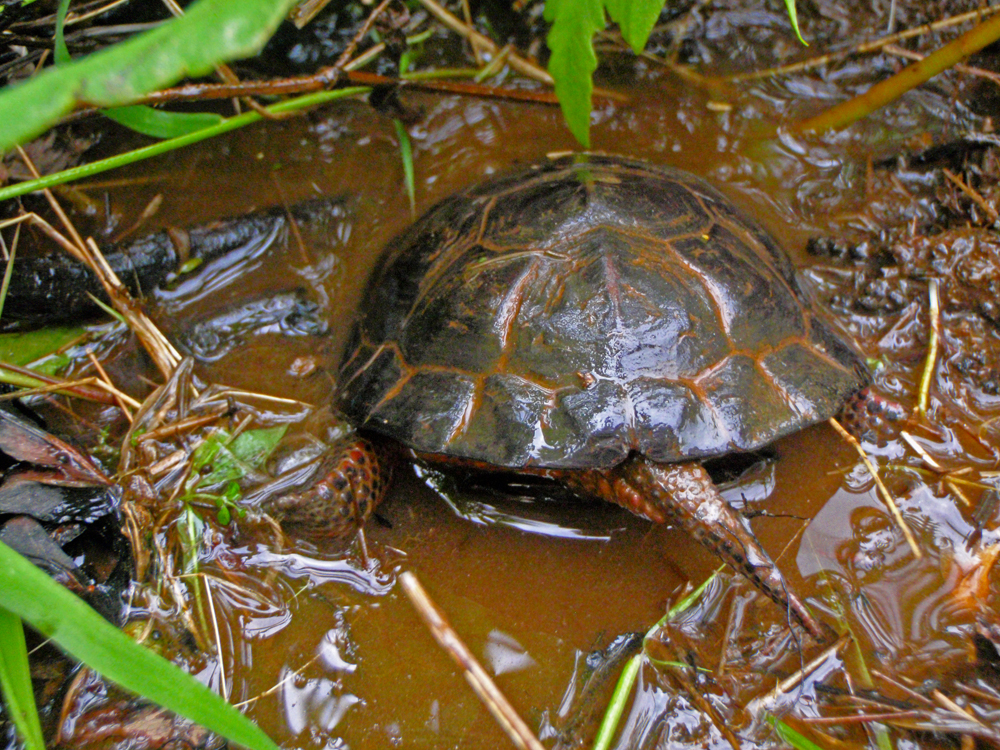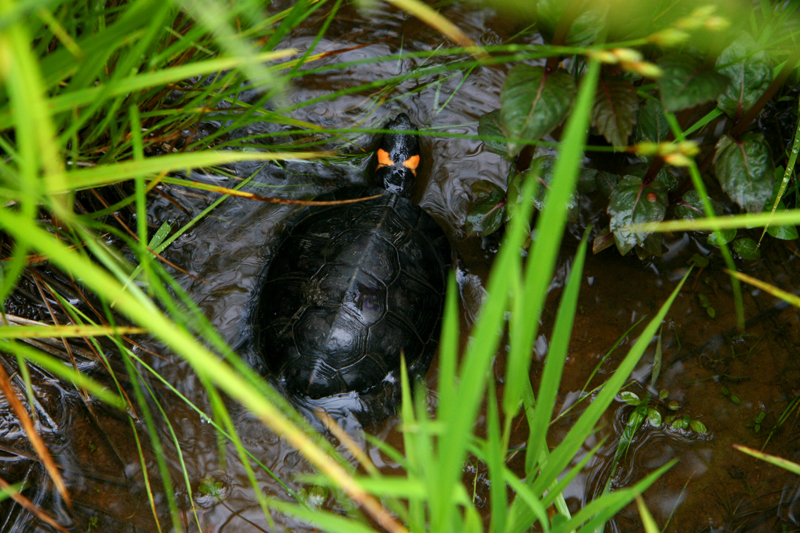
I am up to my knees in mud, surrounded by a blanket of skunk cabbage. The blazing midday sun cooks my flesh while a patchwork of fresh cuts on my forearms begin to tingle. Some may be imagining some type of cruel hell but to me it doesn’t get much better then this.
I stand in the center of a biological oasis, a place with lush ferns and billowing grasses. This is a rare and amazing habitat where fresh spring water bubbles up from the ground, saturating the earth and creating a home for many unique species of plants and animals. Although I wouldn’t mind taking off work to come play in the mud, I am actually here to find one of the rarest and smallest turtles in North America, the bog turtle.
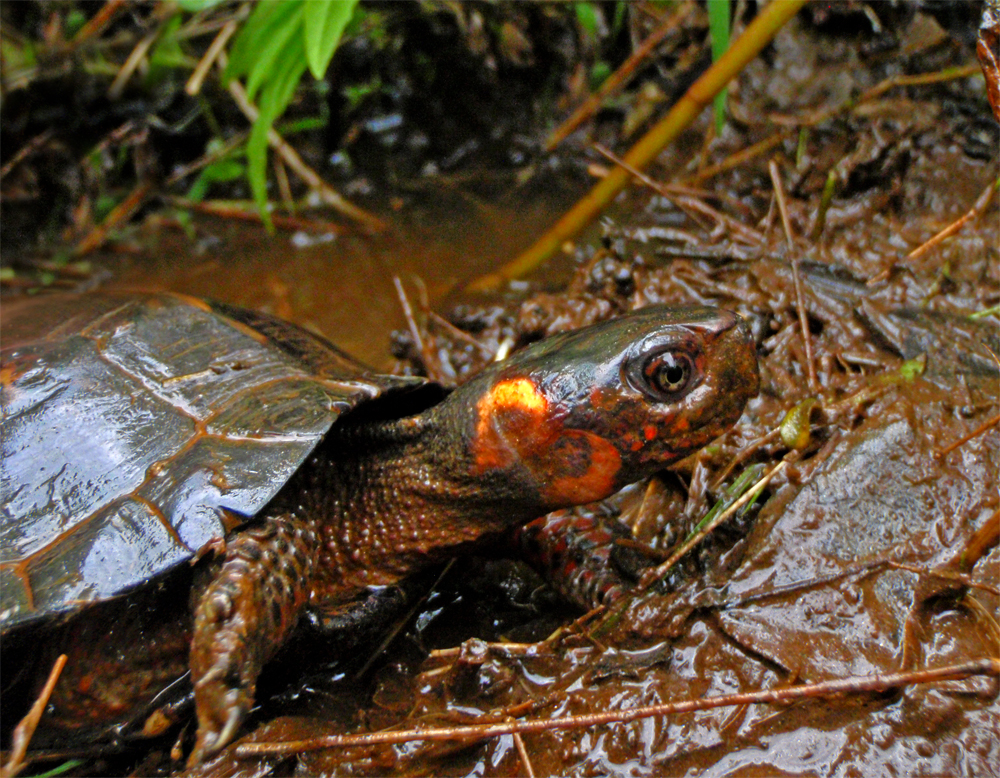
Few people have heard of a bog turtle, let alone see one in person. I have been fortunate enough to be invited out today to survey a Baltimore County population with representatives from the Maryland Department of Natural Resources, U.S. Fish and Wildlife, and a few environmental consultant firms trained to find turtles that may be affected by construction projects. The site is on private property, as are most bog turtle sites, and we have been given permission by a fantastic couple who share our passion for the conservation of these special creatures. In Maryland they only found in a few isolated locations in the northern counties that border the Pennsylvania line, from Carroll east to Cecil. The rest of their range isn’t much different with scattered colonies sprinkled from Georgia to Massachusetts. They are federally protected under the Endangered Species Act and considered “threatened”.
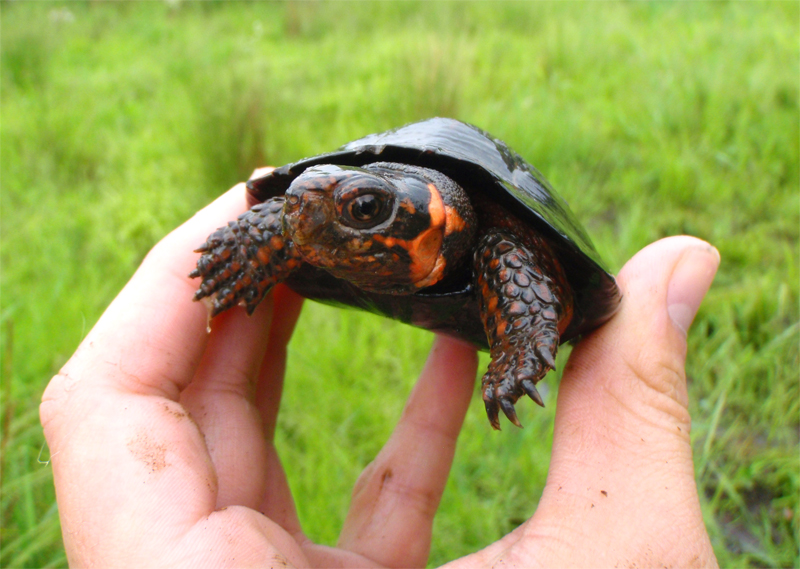
The search is long and it is difficult to move through the deep mud. The turtles are experts at concealing themselves and over the first several hours of searching, the group only finds five. This may not seem like a lot, but for something so rare; it’s actually considered a successful day. I search long and hard, leaving no leaf unturned (almost literally). I dig my hands into the muck, feeling around like a raccoon. I have found bog turtles at other sites but today I am striking out. I have to be thankful that the biting insects haven’t emerged in full force yet.
We collect the turtles that we set aside throughout the morning and move to higher ground so they can be measured, weighed, and marked if necessary. We meet back up with the property owners who prepare a delectable banquet for us. These folks are incredible hosts.
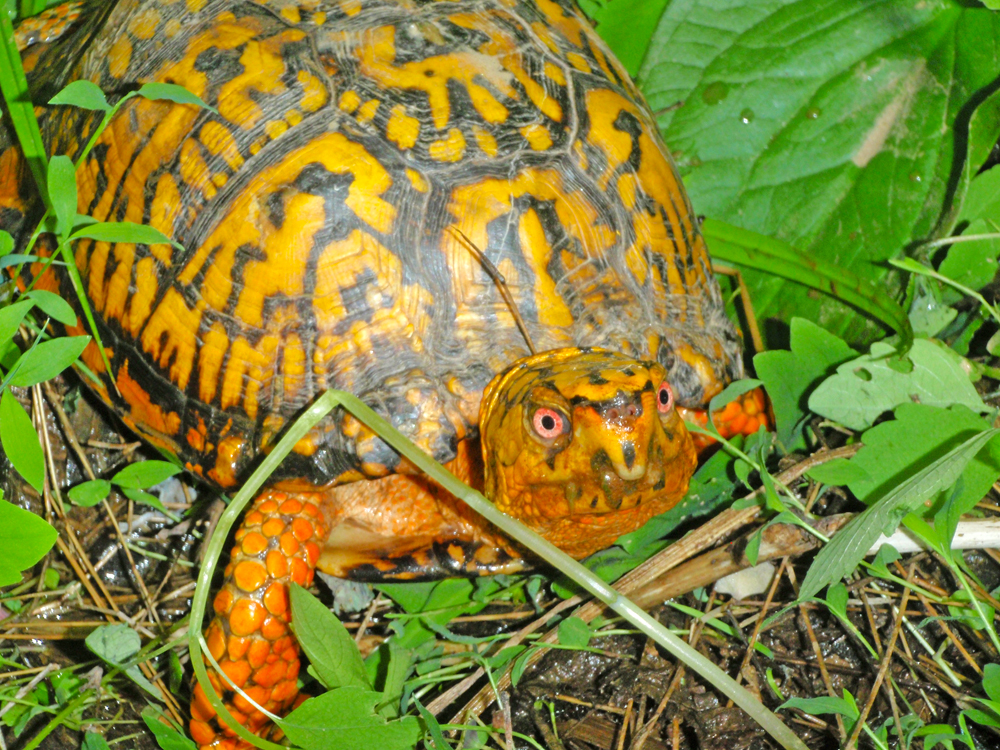
With full bellies and the hope of finding a few more turtles, we trek back down to the bog to prepare to release our earlier catch. While scoping out a few areas we missed, one of the volunteers finds a stunning male eastern box turtle. It has the most radiant orange coloration I have ever seen in a box turtle, looking more like a pumpkin than a turtle. In additional to a couple of common frog species, this terrestrial species is nice little bonus for the day. We fan out, dig around for a while, and then decide it’s just about time to pack it up. I check one more spot and wait, that’s not a rock, that’s a turtle shell! I excavate a less than four inch shape out of the mud and see a little smiling head peeking out with the bright orange blotches that scream “bog turtle”! The small, narrow tail tells me that this particular individual is a female; males have much longer and thicker tails. I flag the spot I found her so we can release her back after the data is recorded. Once released back to the mud, bog turtles disappear out of sight almost instantly. Whoever says turtles are slow must have never seen this magic act.
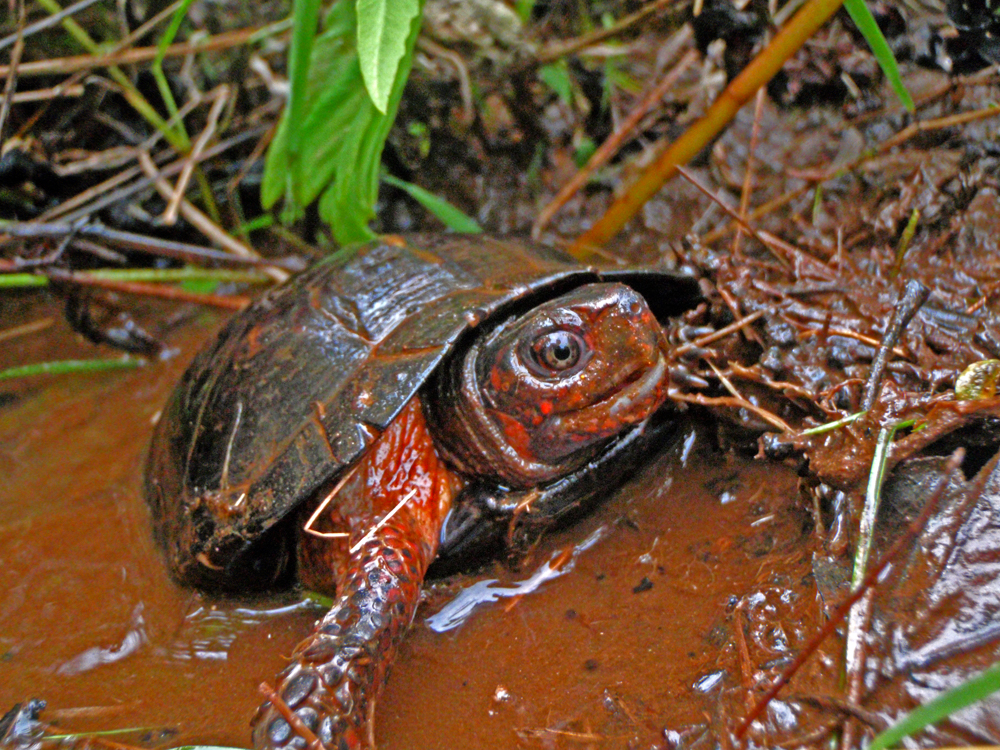
While the excitement of finding such a rare species swirls inside of me, I fight a dark cloud in the back of my head. Today we are happy to find a decent handful of these turtles with a couple dozen more still hiding all around us. A few decades from now however, this may not be the case. Not only are overall populations dangerously low, but what habitat remains is often fragmented and getting destroyed at an alarming rate. Bog turtles have a slow reproductive rate and are sometimes stolen from the wild to be sold to black market collectors. Just a few individuals missing from a site after predation, poaching, or disease can cause a population to crash, never to be reclaimed. These turtles and so many species are fighting an uphill battle. We must remain diligent in our research to understand them fully so we can protect them in every way possible. I hope there will be many more days in the fen like today, but only time will tell.
